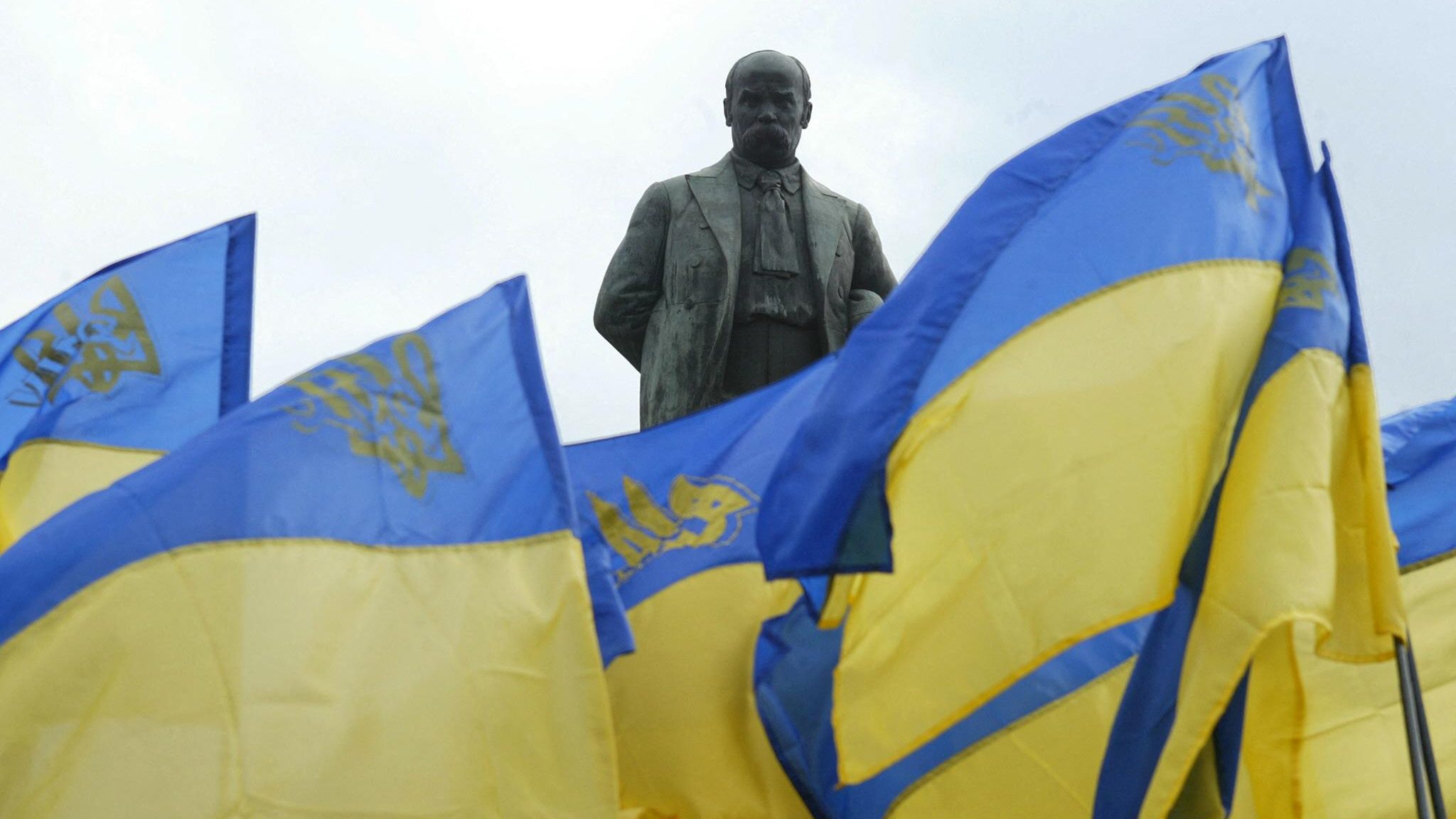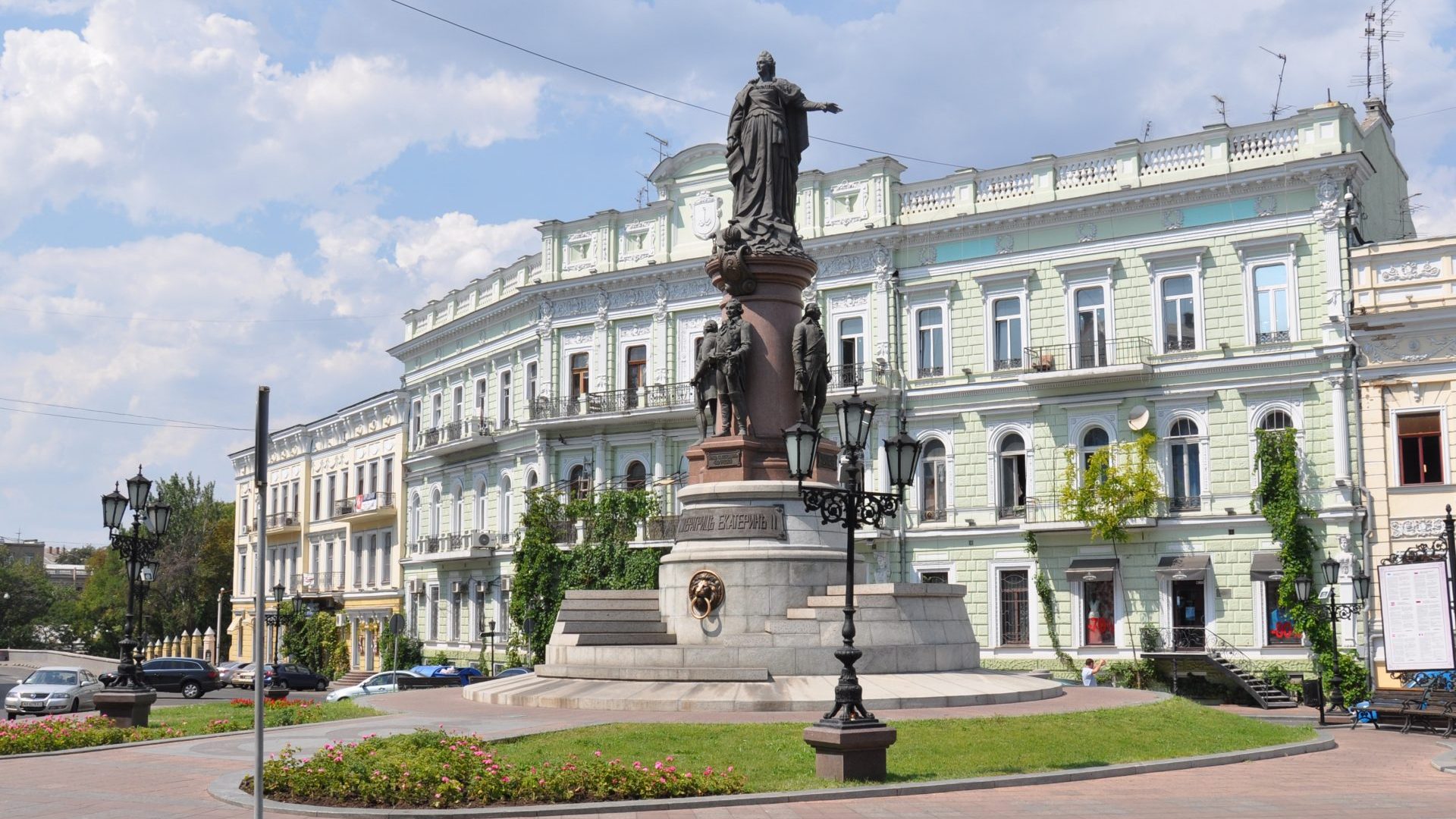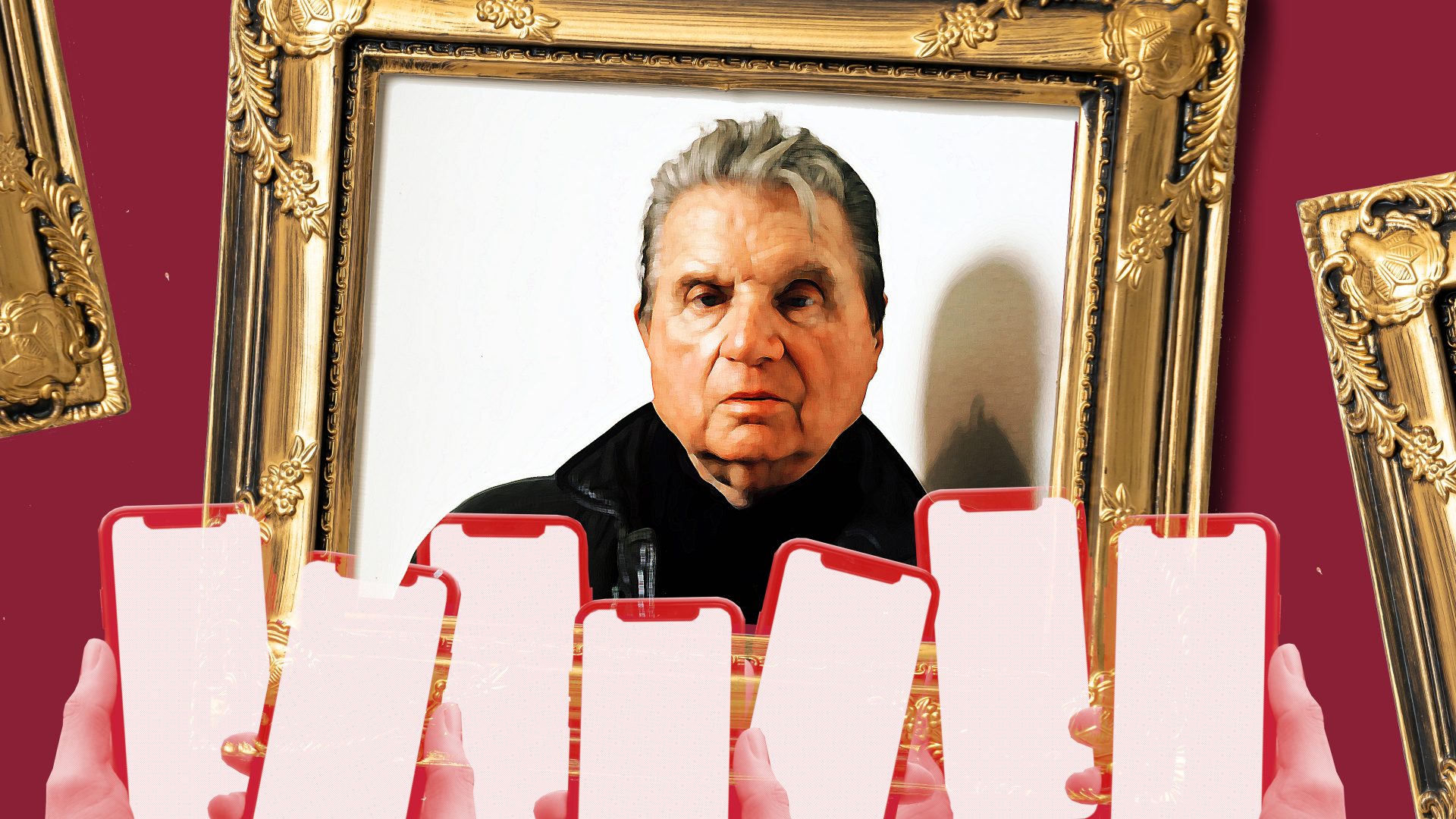When I am dead, then bury me
In my beloved Ukraine,
My tomb upon a grave mound high
Amid the spreading plain,
So that the fields, the boundless steppes,
The Dnieper’s plunging shore
My eyes could see, my ears could hear
The mighty river roar.
Seriously ill with pneumonia, 31-year-old Taras Shevchenko thought he was dying that Christmas Day in 1845. He wasn’t, as it turned out, but that vision of his own mortality as he lay in his sickbed in a guesthouse in Pereyaslav, 50 miles south-east of Kyiv, brought his love for his native Ukraine into sharp focus. When his fever eventually eased, he picked up a pen and a notebook and wrote Zapovit (My Testament), the heartfelt distillation of a man’s passion
for his repressed nation.
Zapovit is a short poem not published officially until long after Shevchenko’s death, yet even today, even after everything the Ukrainians have been through in the intervening decades, it retains a special status among them that is eclipsed only by the national anthem itself. Shevchenko, an artist and
playwright as well as a poet, remains arguably the greatest cultural figure
Ukraine has ever produced and a rallying point for the nation through its
darkest times. He dedicated his life to Ukrainian self-determination and was a pioneer in the establishment of Ukrainian as a written language worthy of prose and poetry in its own right.
During the Soviet era, Shevchenko’s stature was such that his work was never banned despite its nationalist sentiments, the authorities choosing reluctantly to emphasise his anti-Tsarist credentials instead. Even so, the simple act of laying flowers at one of the many memorials to him was enough to have you noticed by the KGB. Similarly, under Putin in post-Soviet Russia, FSB agents would monitor gatherings at Shevchenko monuments in Russia. As recently as 2014, Ukrainians marking the bicentenary of the poet’s
birth were attacked by pro-Russia gangs in Donetsk and Sevastópol.
With statues and memorials across the world erected by the Ukrainian diaspora from Canberra to Washington, Buenos Aires to Rome, few nations can boast a cultural figure so enmeshed with the very essence of their national identity as Taras Shevchenko.
“Body and soul,” he wrote, “I am the son and brother of our unfortunate
nation.”
When from Ukraine the Dnieper bears
Into the deep blue sea
The blood of foes… then will I leave
These hills and fertile fields –
I’ll leave them all and fly away
To the abode of God,
And then I’ll pray… But till that day
I nothing know of God.
By his mid-30s Shevchenko had become a well-known anti-Tsarist dissident. Born into serfdom in rural Ukraine and in effect owned, like the rest of his family, by landowner Vasily Engelhardt, Shevchenko had been orphaned at the age of 12, at which point he went into the domestic service of Engelhardt’s son, Pavlo. Spotting the youngster’s artistic talent, in 1832 Engelhardt arranged an apprenticeship for the 18-year-old to the painter Vasiliy Shiryayev in St Petersburg.
So impressive was his work there that a group of the city’s cultural patrons bought Shevchenko out of serfdom for 2500 roubles in 1838, the year he was
also accepted into the Imperial Academy of Arts.
When he wasn’t painting Shevchenko was writing, and in 1840 his first poetry collection, Kobzar, was published in St Petersburg, followed a year later by his epic poem Haidamaky, chronicling the 1768 Koliivshchyna uprising in Ukraine.
Having settled in St Petersburg, Shevchenko made three return visits to Ukraine during the mid-1840s, visiting family members still tied by serfdom to the Engelhardts and meeting prominent Ukrainian cultural figures. He was angered by the oppression suffered by the people of Ukraine, inspiring a series of sketches and etchings of derelict historical buildings and neglected
monuments that he published in 1844 as Zhivopisnaia Ukraina, “Picturesque
Ukraine”, and forging a deep commitment to a brighter future for Ukraine free from Russian tyranny.
He moved back to Ukraine in 1845 and the following year became involved with a secret society, The Brotherhood of Saints Cyril and Methodius. The society agitated for freedom of speech and religion, an end to serfdom, and a
national renaissance as part of a pan-Slavic federation in which Russia would be reduced to an equal partner.
Although he wasn’t officially a member of the brotherhood, Shevchenko’s well-known nationalist ideals and the fact that his poems The Dream, The Caucasus and The Epistle, which called for revolutionary uprising, were found among the possessions of the group’s leaders were enough to have him guilty by association. Crossing the Dnieper on a ferry on the outskirts of Kyiv one day in March 1847, Shevchenko was arrested, sent to St Petersburg for trial, convicted, imprisoned and subsequently banished into exile as a forced conscript in the Russian army.
Even though he wasn’t an official organiser of the brotherhood, Shevchenko’s punishment was far worse than his comrades’, with Tsar Nicholas I even specifying that he be kept “under the strictest surveillance, with a ban on writing and painting”.
He was posted to a fort near the remote town of Orsk, close to the modern Russian border with Kazakhstan, defying the Tsar’s orders by transcribing the poems he had written in prison into a small notebook. He was discovered and sent to an even more remote outpost. Fortunately he had managed to smuggle the poems, later collected as In The Dungeon, out of the
fort before they could be destroyed.
Despite the new, stricter regime Shevchenko continued to produce poems, sketches and even novellas.
He was released in 1857, a decade after his arrest, and in 1859 was granted permission to return to his beloved Ukraine, where he planned to build a house and live out the rest of his days. Within weeks he was arrested on trumped-up blasphemy charges and sent back to St Petersburg.
Shevchenko’s exile might have left him physically frail but creatively he was at his peak, producing a series of paintings depicting historic scenes of battles against tyranny he called Champions of Sacred Freedom and poems advocating the quest for freedom through resistance and revolution.
Yet when he died in 1861, the day after his 47th birthday, it was in St Petersburg, where he was buried in the Smolensk cemetery against the wishes he had set out in Zapovit. Before long friends arranged for him to be exhumed, taken by train to Moscow and then by horse and carriage to be interred on what is now known as Taras Hill, overlooking the Dnieper at Kaniv, south-east of Kyiv. His tomb is indeed upon a grave mound high, just as he had asked in the poem’s opening lines. Finally, he was home. Now it was up to the Ukrainians themselves to fulfil their destiny.
Oh bury me, then rise ye up
And break your heavy chains
And water with the tyrants’ blood
The freedom you have gained.
And in the great new family,
The family of the free,
With softly spoken, kindly word
Remember also me.




